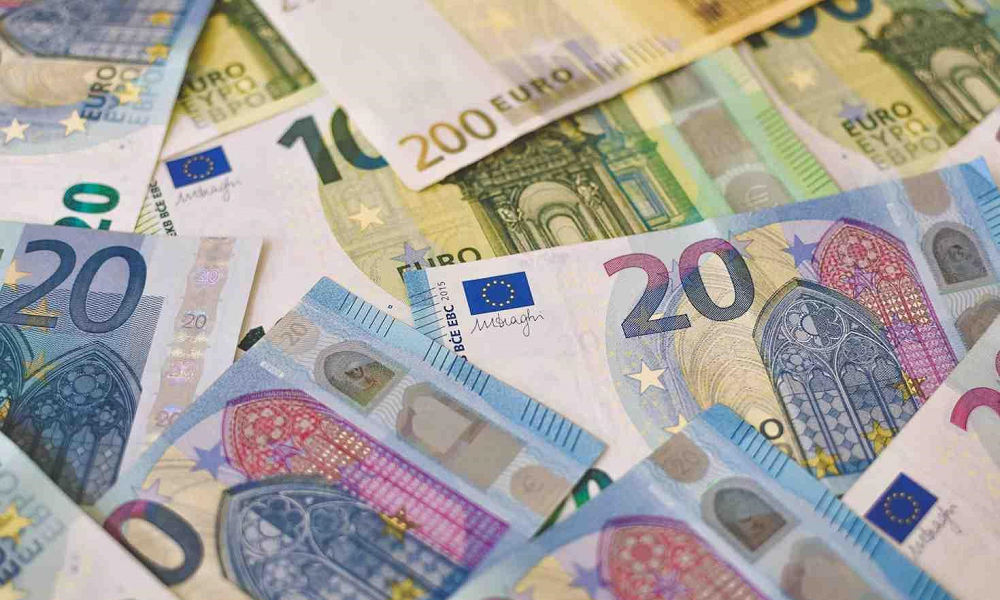Reviews
Explore the Differences Between Legally Produced Prop Money and Counterfeit Currency

Money is important in our lives as it helps us trade goods and services with others and effectively track our finances over time. While cash is essential for buying and selling goods, not all money is created equal in the eyes of the law. People often mix prop money used in movies and fake money made to deceive others. Knowing the disparities between these two types can help us avoid trouble and feel secure. This article aims to clarify the differences between these two kinds of cash.
What is Prop Money?
So, is prop money illegal? Prop money is crafted explicitly for the entertainment industry, such as movies and TV shows, to resemble cash without actual worth. The main goal of prop money is to make scenes in media more authentic by showing transactions without the need for real money. Manufacturers of prop money focus on creating realistic appearances while ensuring it doesn’t break any laws by following rules that distinguish it from genuine currency.
Features of Fake Money
Fake money usually has distinguishing features you can spot when you look at it. Although it might look like real money from a distance, examining it closely reveals some differences. These may include differences in size, color, or design aspects. Usually, the paper manufacturers use differs and lacks the security features of genuine currency. Furthermore, fake money might have disclaimers like “For Use in Films” to clarify that it is not real.
Guidelines Concerning Imitation Money
Making prop money requires following rules to avoid misuse. Laws require specific changes to meet standards. These rules differ from country to country and aim to prevent confusion between real money and fake money. Not following these rules can lead to fines or legal repercussions. Therefore, trustworthy producers adhere to the regulations to safeguard themselves and their customers.
Exploring Fake Money
Unlike prop cash, counterfeit money is an act of deception used for legitimate purposes. Counterfeiters aim to make copies of currency to deceive people and businesses by passing off these phony bills as real money. Counterfeiting is a crime that carries severe penalties. Law enforcement agencies around the globe work tirelessly to prevent the production and circulation of counterfeit currency by employing detection and prevention methods.
Uncovering Fake Money
Detecting fake money requires staying alert and understanding the security features found in real currency notes. Genuine bills include security measures such as watermarks, holograms, and color-changing ink. In contrast, forged notes might appear authentic but usually lack these elements or imitate them inadequately.
The Ramifications of Counterfeit Operations
So, is prop money illegal? Counterfeiting is an offense that can result in legal consequences. Making or circulating fake money is considered a major crime in most places and can lead to substantial fines and prison time if caught and convicted. Even unknowingly using counterfeit bills can land you in legal trouble because of the potential complications it can cause, highlighting the need for vigilance and care when handling cash.
Variations in Manufacturing and Purpose
The key distinctions between prop money and counterfeit currency stem from how they’re made and their intended purposes. Prop money is specifically created for entertainment purposes and must meet legal guidelines to indicate its falsity. On the other hand, counterfeit money is crafted to deceive, aiming to replicate currency in all aspects, thereby enabling fraudulent activities.
The Legal Ways to Avoid Them
Knowing the ramifications of prop money and counterfeit currency is essential for individuals and businesses. Having legally obtained prop money doesn’t pose any risk; however, engaging with counterfeit currency can result in serious repercussions. Being informed serves as a deterrent against illegal behavior. Understanding the differences and adopting a proactive approach can shield people and establishments from being ensnared in counterfeiting scams.
In Summary
Differentiating between prop money and counterfeit currency is crucial to complying with regulations and avoiding legal issues. Even though both types of cash imitate currency in appearance, their intentions and legal implications are vastly different. Prop money is used in the entertainment sector following rules that discourage misuse. On the other hand, counterfeit currency jeopardizes financial systems and people’s financial well-being, resulting in severe legal ramifications for those engaged in its production or distribution.

-

 World3 days ago
World3 days agoEthiopian volcano erupts for first time in thousands of years
-

 Legal1 week ago
Legal1 week agoMichigan man JD Vance sentenced to 2 years for threatening Trump and JD Vance
-

 Legal1 week ago
Legal1 week agoWoman in critical condition after being set on fire on Chicago train
-

 World1 week ago
World1 week agoHurricane Melissa registered 252 mph wind gust, breaking global record
-

 Legal6 days ago
Legal6 days agoSuspect in San Diego stabbing shot by authorities after fleeing into Mexico
-

 Legal1 week ago
Legal1 week ago1 dead, 2 injured in shooting at Dallas Walmart parking lot
-

 Legal6 hours ago
Legal6 hours agoUtah Amber Alert: Jessika Francisco abducted by sex offender in Ogden
-

 Health6 days ago
Health6 days agoMarburg virus outbreak in Ethiopia grows to 6 confirmed cases




